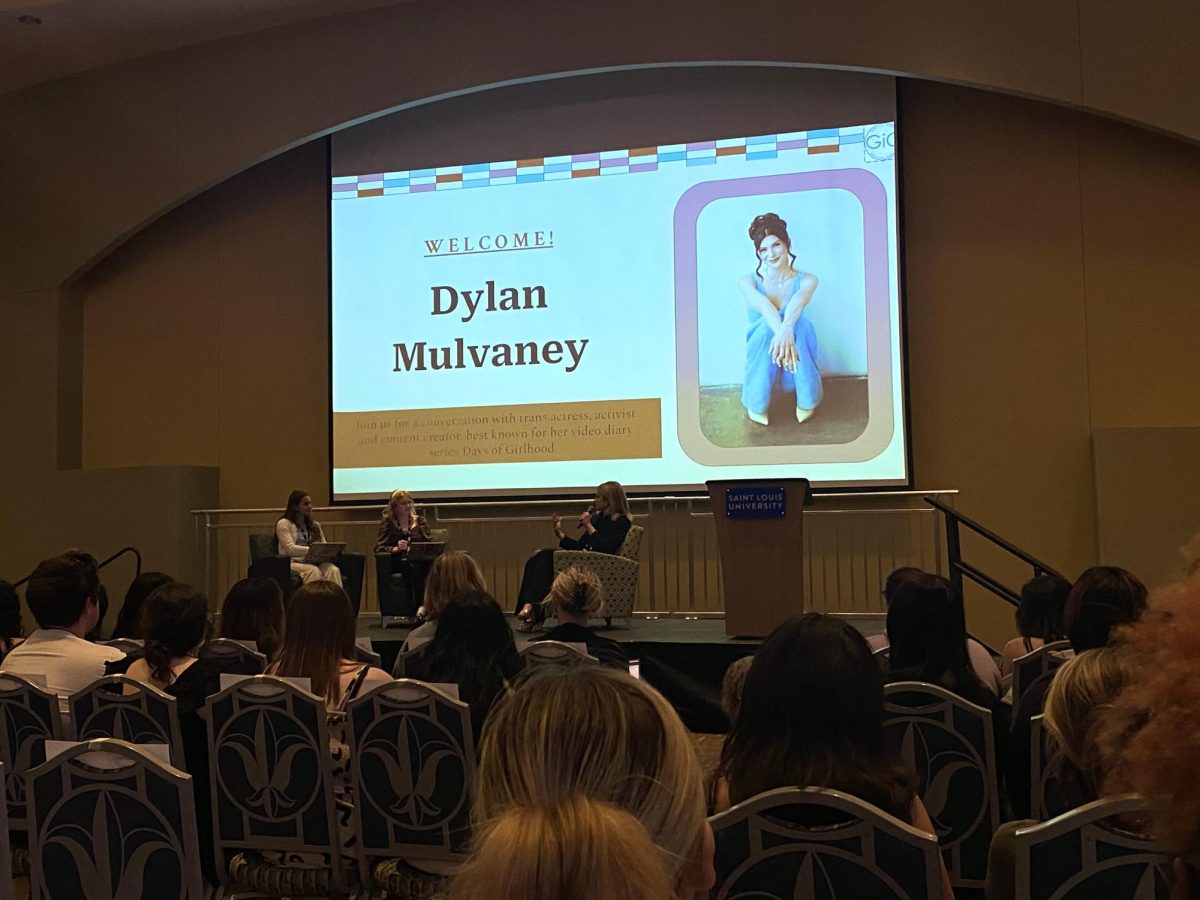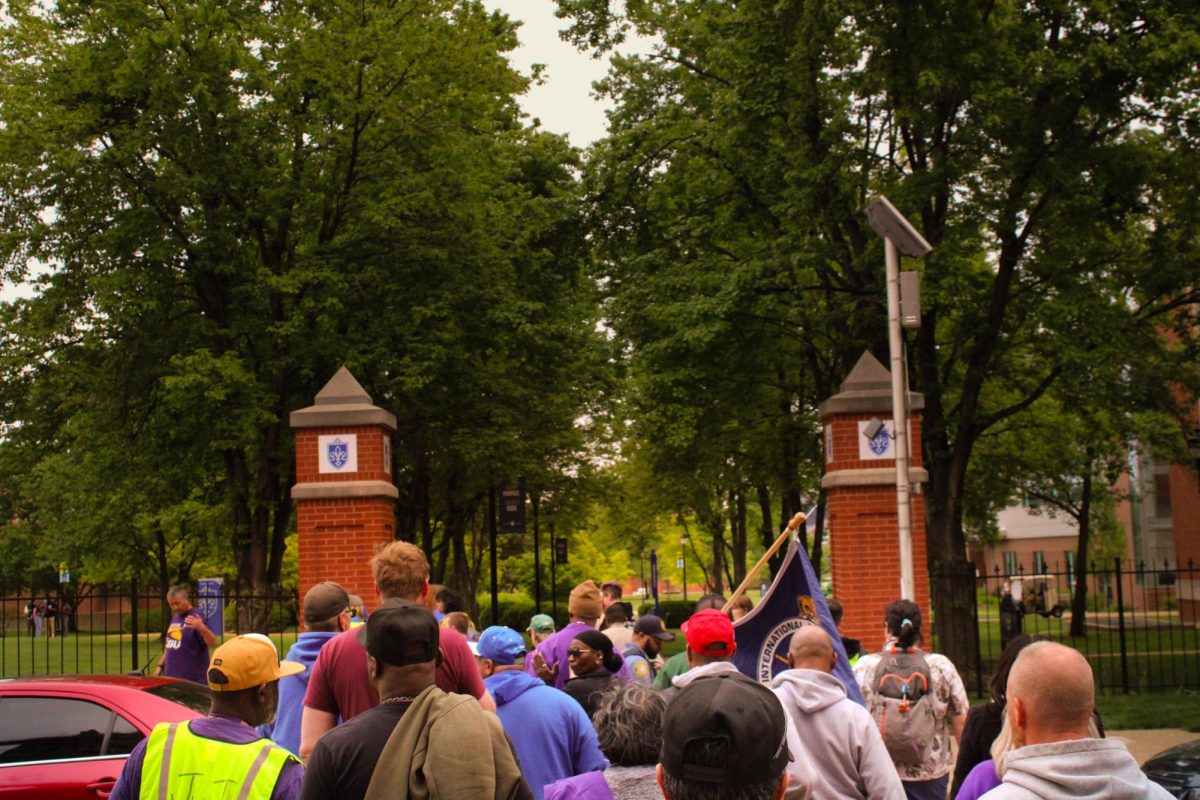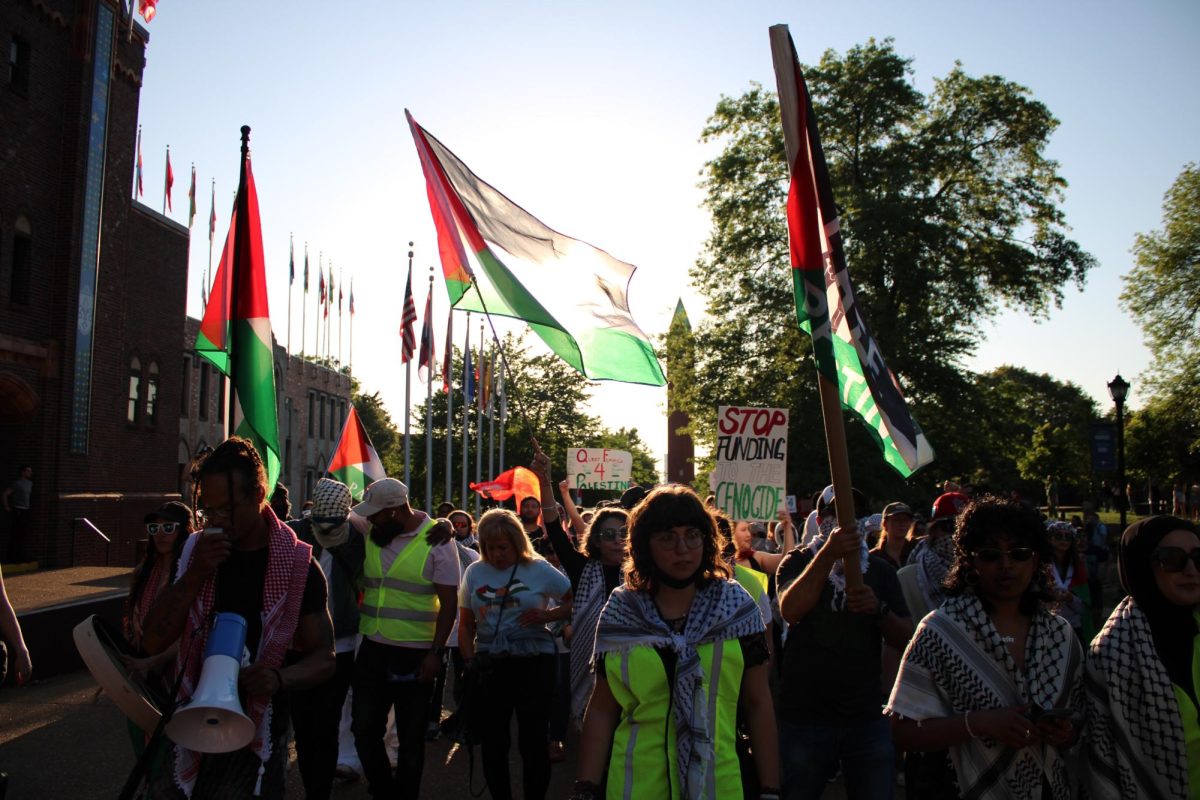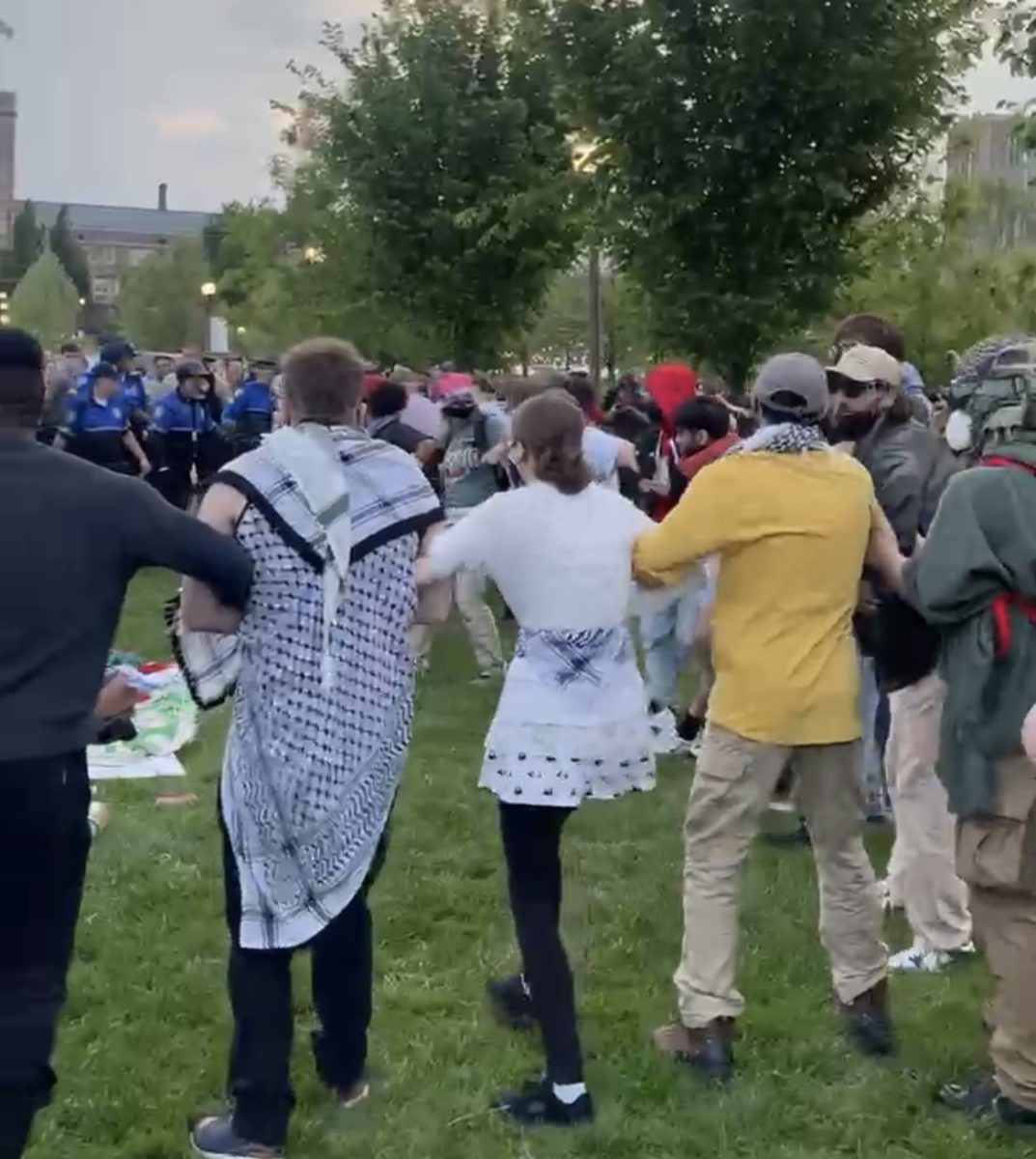Stephanie Nyombayire, a 20-year-old sophomore at Swarthmore College and a native of Rwanda, spoke last Thursday, Sept. 22, at an awareness meeting for the genocide occurring in Darfur. The meeting was sponsored by the College Democrats, Amnesty International, the International Student Federation, Black Student Alliance and the Great Issues Committee.
Students and faculty filled the seats of room 137 in Davis Shaughnessy Hall.
“I was definitely impressed [by the turnout]. I didn’t expect it, and I think that it showed that there are a lot of people at SLU who are concerned about the injustices and wrongs being committed all over,” said Paul Kaiser of the College Democrats.
Emmanuel N. Uwalaka, Ph.D., from the political science department, introduced the speaker: “She describes the Rwanda tragedy from the point of view of one who experienced it- She draws from her experience to help us understand what is still happening today.”
Nyombayire began, “Eleven years ago, what has been called the most organized, most systematic and most supported genocide began in Rwanda.”
While an 8-year-old Nyombayire was in Congo, her family was being murdered in their homes in Rwanda.
“The first day, my grandmother was shot in front of her 15-year-old daughter, my aunt. My grandfather was killed the next day. Those who were lucky enough could pay to be shot rather than face the machetes, clubs and whatever else they could find,” Nyombayire said.
She spoke of how rape was used as a weapon, how countless children became orphans and how the “bodies piled up in the streets and in churches.”
“All of this while the international community stood by and watched,” she said. “I’m here today because the same tragedy is happening again. Not because of anything these people have done, but because of who they are.”
Although the Rwandan genocide lasted barely four months, more than 800,000 Rwandans were killed and 95,000 children orphaned. Ten years later, the country still faces the lingering impact of the violence suffered. Now, in Darfur, a similar conflict is taking place.
Darfur is a region of west Sudan, roughly the size of Texas, where there has been ongoing conflict between the Janjaweed, a government-supported militia primarily recruited from local Arab tribes, and the non-Arab people of the area.
The resulting refugees include primarily non-Arab Africans fleeing Janjaweed attacks, and thus the conflict has frequently been described both as ethnic cleansing and genocide.
In September 2004, the World Health Organization estimated that 50,000 have died in Darfur since the beginning of the conflict, mostly by starvation. A recent British Parliamentary Report estimates that over 300,000 people have already died, while more than 1.8 million have been displaced from their homes and 200,000 have fled to neighboring Chad.
Nyombayire spoke of her recent visits to refugee camps in Sudan: “I gave the children in one hut paper and asked them to draw for me. They drew dead bodies, plane bombings and men being chased with guns. When I asked them how often they saw this, they smiled and answered, ‘All the time.'”
Last year at Swarthmore, the Genocide Intervention Fund was started to increase awareness of and raise money for the African Peace Keeping Mission, because presently there is little support. They have already brought in a quarter of a million dollars.
Nyombayire initiated a call to arms, so to speak, encouraging groups at SLU to do the same.
“You can help provide security to Darfur, to prevent future genocide and allow children to return to a childhood where their pictures are of joy and prosperity,” she said.
She also suggested that students get involved by visiting the Web sites beawitness.org and campusprogress.org. “First and foremost, we have to raise awareness.”
SLU hopes to do its part to help with the situation in Darfur.
“The primary goal of GIF is to raise awareness,” said Kaiser. “On one hand, we’ve already done something by telling so many people. On the other hand, we have no concrete plans, but are hoping to do some fundraisers and work with beawitness.org to do more.”
The Darfur situation is receiving even less support because of American suffering in the aftermath of its own tragedy. Since the hurricane, funding for refugee camps has dropped significantly.
After her speech, Stephanie fielded questions from the audience. Many people were eager to learn more about the cause and to make an effort to do something.
“She definitely had an extensive knowledge of the subject and gave a good intro into the problem,” said freshman Amanda Ring-Rissler.
Kaiser considered the event an overall success.
“I was really pleased with her speech; it was to the point and therefore very effective, rather than being drawn out or long-winded,” he said. “I was really impressed and glad that she had taken time from her schoolwork and her life to do this- And afterwards, she said that coming to SLU and missing a few days was ‘definitely worth it.'”






